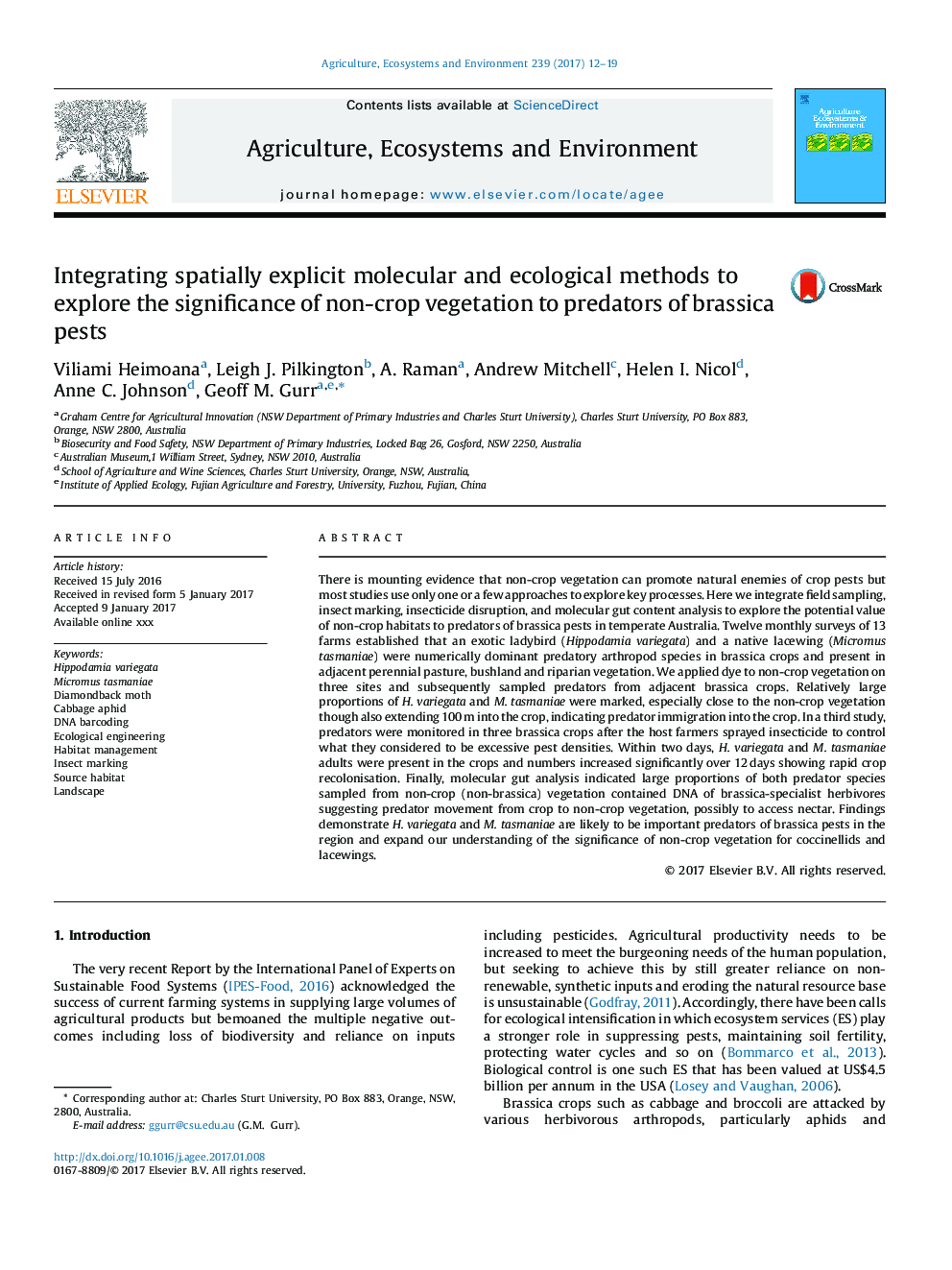| کد مقاله | کد نشریه | سال انتشار | مقاله انگلیسی | نسخه تمام متن |
|---|---|---|---|---|
| 5537908 | 1552013 | 2017 | 8 صفحه PDF | دانلود رایگان |
عنوان انگلیسی مقاله ISI
Integrating spatially explicit molecular and ecological methods to explore the significance of non-crop vegetation to predators of brassica pests
ترجمه فارسی عنوان
ترکیب روش های مولکولی و اکولوژیکی صریح مرسوم برای کشف اهمیت پوشش گیاهی غیر گیاهی به شکارچیان آفات براسکا
دانلود مقاله + سفارش ترجمه
دانلود مقاله ISI انگلیسی
رایگان برای ایرانیان
کلمات کلیدی
موضوعات مرتبط
علوم زیستی و بیوفناوری
علوم کشاورزی و بیولوژیک
علوم زراعت و اصلاح نباتات
چکیده انگلیسی
There is mounting evidence that non-crop vegetation can promote natural enemies of crop pests but most studies use only one or a few approaches to explore key processes. Here we integrate field sampling, insect marking, insecticide disruption, and molecular gut content analysis to explore the potential value of non-crop habitats to predators of brassica pests in temperate Australia. Twelve monthly surveys of 13 farms established that an exotic ladybird (Hippodamia variegata) and a native lacewing (Micromus tasmaniae) were numerically dominant predatory arthropod species in brassica crops and present in adjacent perennial pasture, bushland and riparian vegetation. We applied dye to non-crop vegetation on three sites and subsequently sampled predators from adjacent brassica crops. Relatively large proportions of H. variegata and M. tasmaniae were marked, especially close to the non-crop vegetation though also extending 100Â m into the crop, indicating predator immigration into the crop. In a third study, predators were monitored in three brassica crops after the host farmers sprayed insecticide to control what they considered to be excessive pest densities. Within two days, H. variegata and M. tasmaniae adults were present in the crops and numbers increased significantly over 12Â days showing rapid crop recolonisation. Finally, molecular gut analysis indicated large proportions of both predator species sampled from non-crop (non-brassica) vegetation contained DNA of brassica-specialist herbivores suggesting predator movement from crop to non-crop vegetation, possibly to access nectar. Findings demonstrate H. variegata and M. tasmaniae are likely to be important predators of brassica pests in the region and expand our understanding of the significance of non-crop vegetation for coccinellids and lacewings.
ناشر
Database: Elsevier - ScienceDirect (ساینس دایرکت)
Journal: Agriculture, Ecosystems & Environment - Volume 239, 15 February 2017, Pages 12-19
Journal: Agriculture, Ecosystems & Environment - Volume 239, 15 February 2017, Pages 12-19
نویسندگان
Viliami Heimoana, Leigh J. Pilkington, A. Raman, Andrew Mitchell, Helen I. Nicol, Anne C. Johnson, Geoff M. Gurr,
